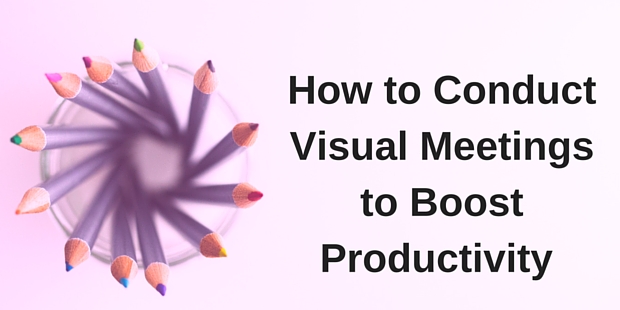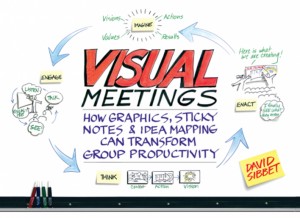
How to Conduct Visual Meetings to Boost Productivity
There’s nothing more annoying than a meeting that goes on and on and on – except maybe a meeting that goes on and on and on AND doesn’t accomplish anything.
Many ministry teams fritter away precious time during meetings on unfocused, inconclusive discussion rather than rapid, well-informed decision making. The consequences are delayed decisions that lead to wasted resources, missed opportunities, and poor long-range planning.
Want more successful meetings?
David Sibbet, a world leader in visual thinking for groups, believes visual meetings can reclaim creativity, productivity, and playful exchange for serious work in groups. When people work visually they have better ideas, make better decisions, and are more committed to producing results.
Solution #2: Conduct visual meetings to boost productivity.
Visual Meetings explains how anyone can implement powerful visual tools to facilitate both face-to-face and virtual group work. This dynamic and richly illustrated resource gives meeting leaders, presenters, and consultants a slew of exciting tricks and tools to unlock creativity, collaboration, and breakthrough thinking.
Using techniques like graphic recording, visual planning, story boarding, graphic templates, idea mapping and more, Visual Meetings will help you and your team communicate ideas more effectively and engagingly.
A SIMPLE SOLUTION
Used properly, a simple drawing is more powerful than any data spreadsheet or software presentation platform. It can help us crystalize ideas, think outside the box, and communicate in a way that other people simply “get.”
Over the last decade, the concept of utilizing visualization techniques has moved beyond a few talented practitioners to become available to – and useful for – any leader.
Anyone can clarify a problem or sell an idea by visually breaking it down using a simple set of visual-thinking tools. Thinking with pictures can help you discover and develop new ideas, solve problems in unexpected ways, and dramatically improve your ability to share your insights.
In my experience, visualizing meeting purposes and objectives is one of the most helpful things you can do to make a meeting work. And getting people involved early in talking about expectations and hoped-for outcomes is even more effective. Because people are free to imagine whatever they want and often do, this investment is the first step in focusing group intelligence.
The Power of Visual Meetings
Participation – Engagement explodes in meetings when people are listened to and acknowledged by having what they say recorded in an interactive, graphic way.
Big Picture Thinking – Groups get much smarter when they can think in big picture formats that allow for comparisons, pattern finding, and idea mapping.
Group Memory – Creating memorable media greatly increases group memory and follow-through – a key to productivity.
Benefits of Visualization
- Visual recording in a meeting immediately acknowledges that someone was heard and how they were heard in ways that verbal communication alone does not.
- Working visually is deeply integrative – it combines both visual (right brain) and verbal (left brain) ways of operating with interaction and physical movement.
- Graphic displays can contain contradictory information on the same sheet of paper, softening the either/or thinking that our spoken language reinforces.
- Working with graphic metaphors allows people to talk directly about how they are making sense of things.
- Working with visual imagery taps people’s imagined realms, making the stuff of hopes and dreams, intentions, and visions more accessible.
- Arranging information on pages or wall displays addresses not only the individual words and symbols, but also their overall interconnections and organization.
- Translating from spoken word to visual representation forces everyone to become conscious of the patterns in both.
David Sibbet, Visual Meetings
A NEXT STEP
In order to start your team thinking about a visual meeting, you have to begin before the meeting. Consider taking these actions in advance of your next team meeting:
- Create a poster with a catchy title and simple graphic image and place it at eye level outside your meeting room door.
- Using a chart tablet or white board, have meeting participants sign in with their first name and a pressing issue or question related to your meeting.
- Prior to the meeting, visually list your agenda on a chart tablet or white board.
- Using a chart tablet, create a scorecard listing decisions made, action items agreed on, and individual responsible. During successive meetings update and add to this scorecard as needed.
- During the meeting, ask participants to visually illustrate the conversation and decisions of the meeting. Build in time at the end of the meeting for each participant to briefly share his or her “visual notes” with the rest of the team.
After one month of following the above actions, schedule one hour to review, evaluate, and revise your team’s use of visual meeting practices.
Taken from SUMS Remix 8, published February, 2015
>>You can purchase a subscription to SUMS Remix here >>>

Tags: David Sibbet, SUMS Remix, Visual Meetings













